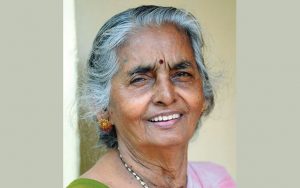Dr. K.Veeramani
Nearly two centuries ago the state of Kerala was at the height of caste discriminatory atrocities. Especially, the princely state of Travancore was notorious for extreme social injustice and dehumanisation. Most people know about Gurukulam agitation, Vaikom struggle etc; A little known historical event is called- ‘Upper garment struggle.’ Today’s generation would raise their brows in surprise when they hear these three puzzling words. What is known as the Upper garment struggle? When did it begin? What made it begin? Did it ever end? Shall we rewind the present and go back to the past?
Obnoxious humiliation
Non-brahmin, suppressed, oppressed, downtrodden, marginalised, scheduled caste women who lived in the princely state of Travancore and in the neighbourhood towns and hamlets were prohibited from using an upper garment to cover their chest. It was banned by upper caste fanatics. Taxes were levied as a punishment for exposure. There were many obnoxious inspections by the officials concerned. Women of Nair Community were the worst affected besides others. A woman called Nangeli cut off her breasts as a mark of protest and sacrificed her life.
The wide spread protest was supported by Christian missionaries and social reformers like MuthukuttySwamy and Ayya Vaikuntar. We are told that the entire struggle went on in three stages. Numerous women sacrificed their life. In 1865 the ban was revoked and the scheduled caste women were granted the right to cover their chest with an upper garment.
The tragic fact is, that was not the end. The prohibition took different forms. The atrocity continued even after Independence in 1947. It can be said that from 1865 upto 1956 the cruelty remained unabated for 90 more years. The ban was under the garb of religion. The towns and villages in Malabar were worst affected. The women there endured inexplicable humiliation. The women of Nair community had to go to the temples and festivals exposing their bare chest.
Chest – Cover Protest

Devaki Nambeesan
The upper garment protest was called ‘Maru Marakkalsamaram’ in Malayalam which meant “chest – cover protest.’ A massive Protest was held in March 1956 at Manimalarkavu temple in Trichur district. It was called an extension of the Upper garment protests held before 1865. Thousands of women participated in this struggle of March 1956. Nearly 400 women of Nair community were in the temple without covering their chest, as per the restriction. 125 women wore blouse and demanded the right to enter the temple and worship. They succeeded in the fight. After that protest Nair community women were granted permission to attend temple festivals covering their chest. All the women of scheduled castes were also allowed to enter temples and festivals covering their chest. Some of the women who took part in that 1956 struggle are still alive and exist in different corners of the country. Two of such women, SeeruKunnath and Vellarottil had told about their experiences to media personnel. Another woman DevakiNambeesan passed away recently- on 11th June 2023.
A brave-heart woman
During the 1956 protest she could not enter the crowd and fight directly because she was about to deliver herself of her child. The days were numbered. So she mobilised all the women in the vicinity of the temple and provoked them to fight. She was then a 23 year old young woman. 67 years have rolled away since that 1956 protest. She was 90 when she passed away on 11.06.2023.
Devaki Nambeesan had retired after serving as a nurse. She had participated in a farmers’ protest in Kerala. Her husband Nambeesan has been a member of the State Legislative Assembly in Kerala. Devakim Nambeesan was instrumental in the 1956 struggle of historical significance. She had led the women rebels.
Fights for Rights
What shocks us terribly is to note that even after Independence in 1947, for about 10 years women in Kerala had been the victims of caste bias, religious disparity and communal fanaticism. If social activists and reformers had not fought relentlessly, all those barbaric atrocities would have continued till this date.
The stories of brave women like Devaki Nambeesan should be told all over the country. Such women are the pride of our nation. Fights for human rights must never end. The life stories of rebellious women like DevakiNambeesan should be even lessons in curriculum for next generations. She undeniably deserves our Royal Salute.





